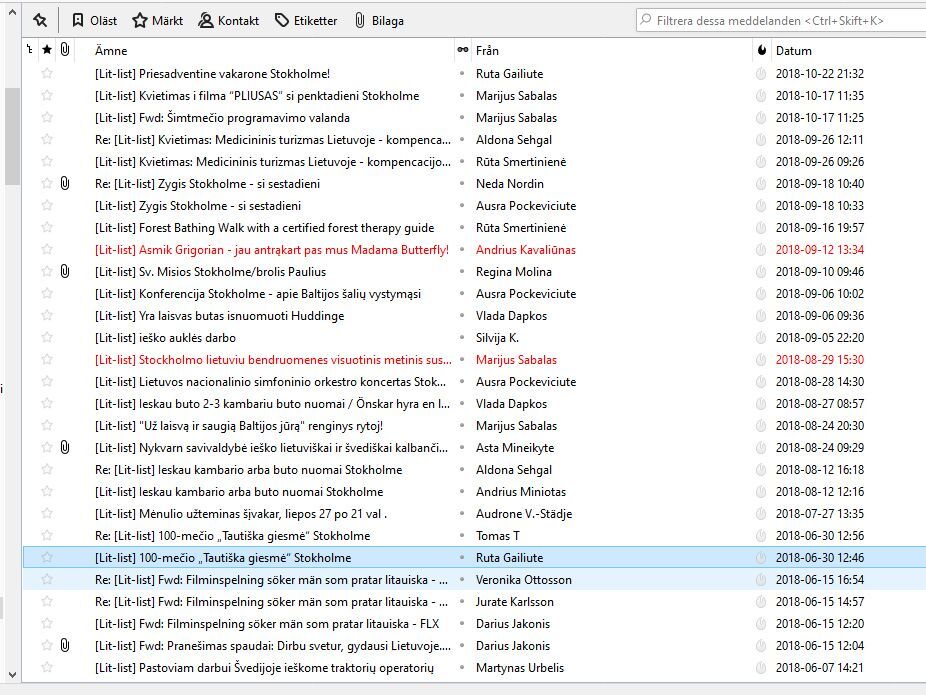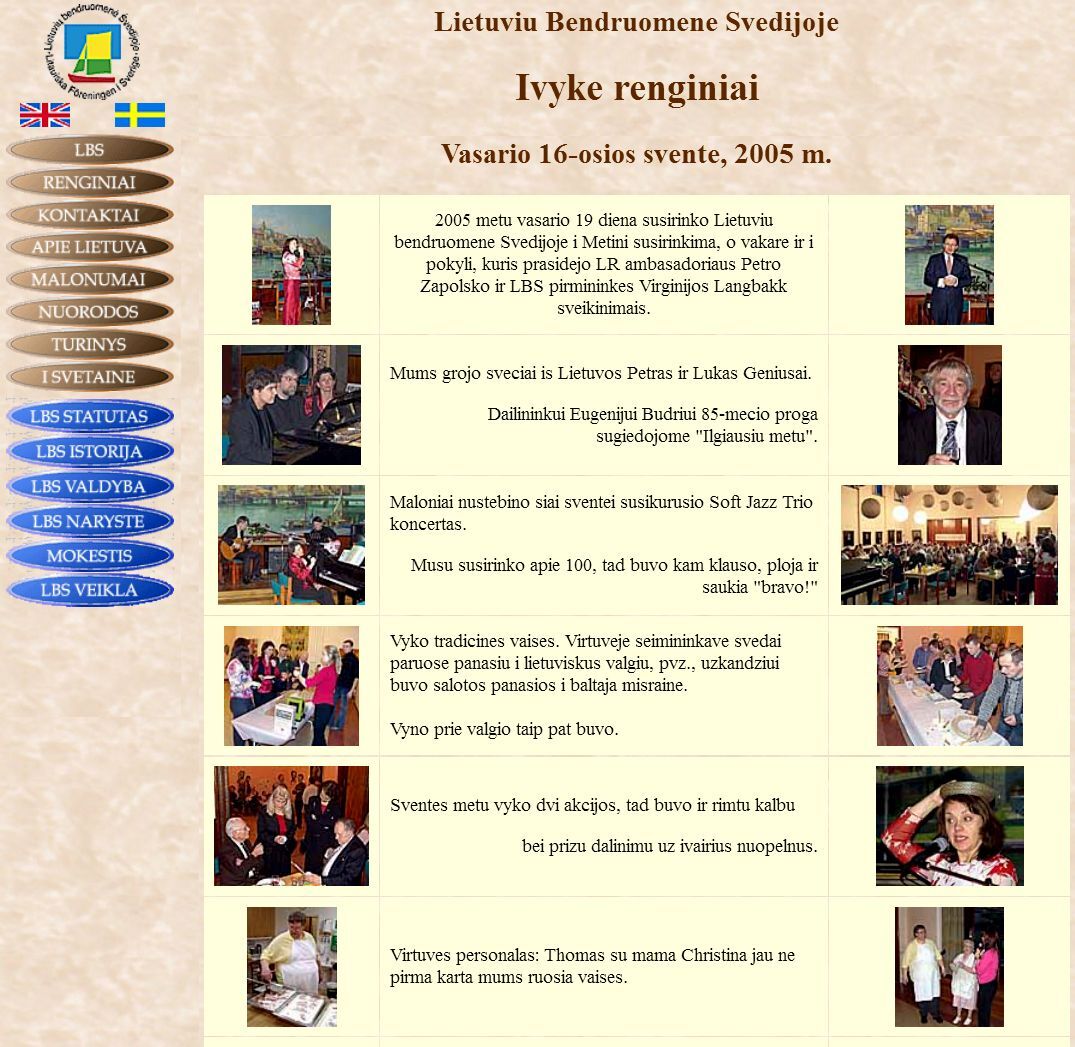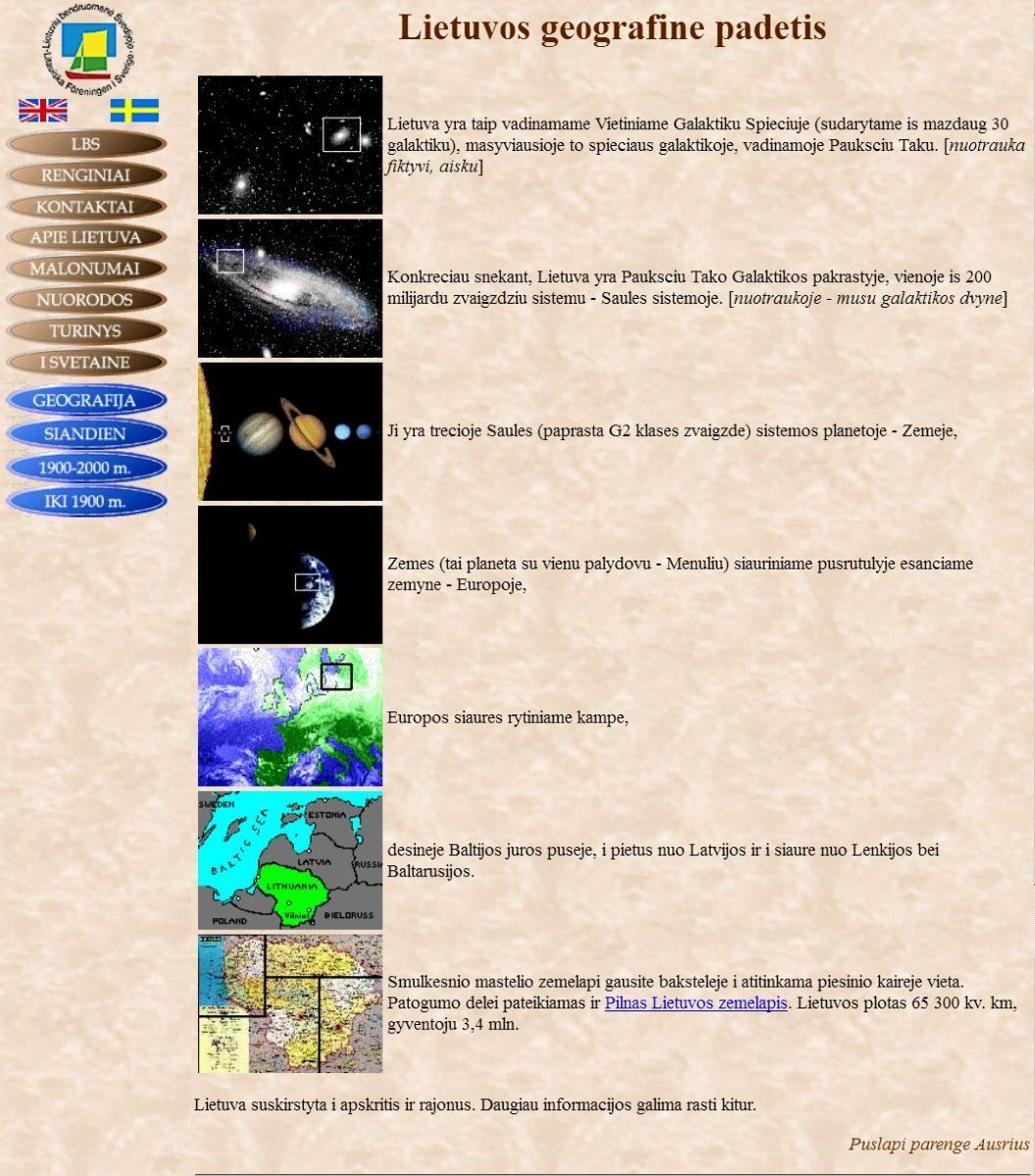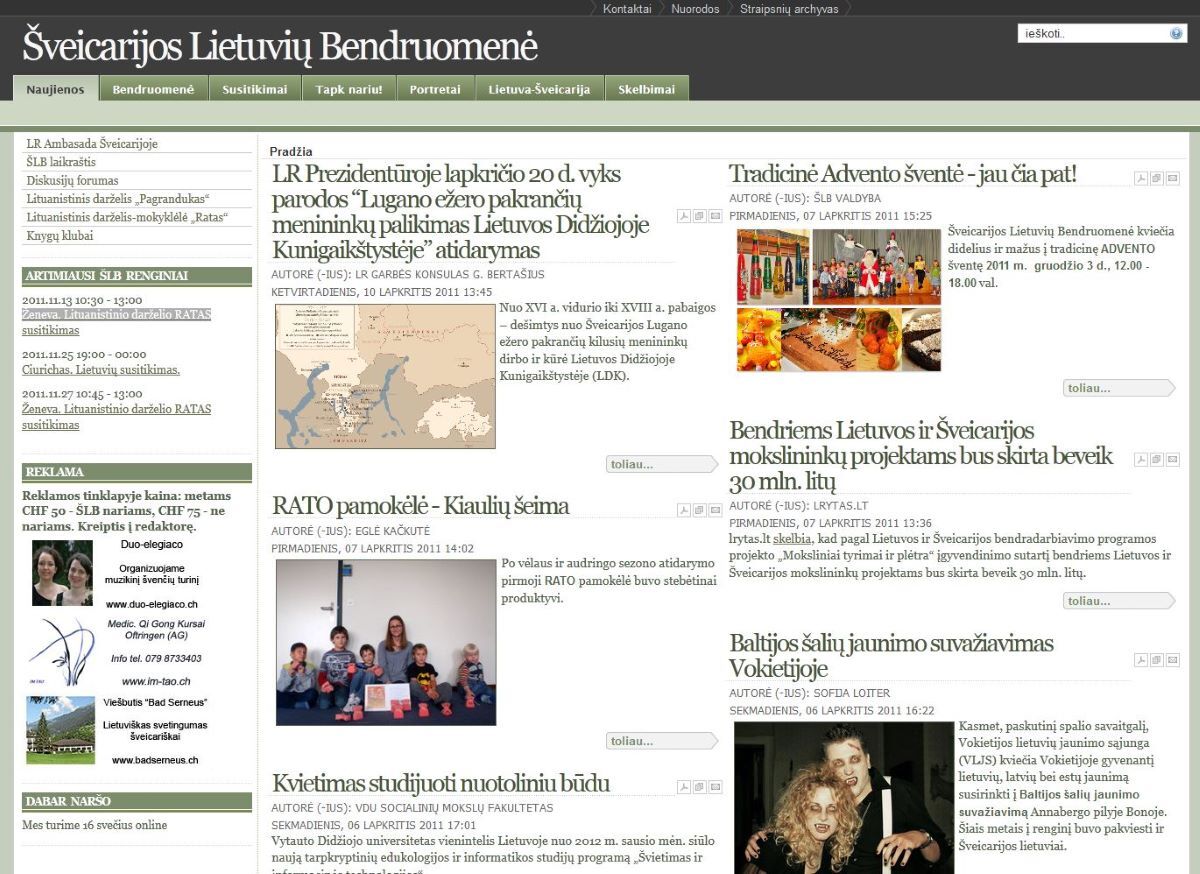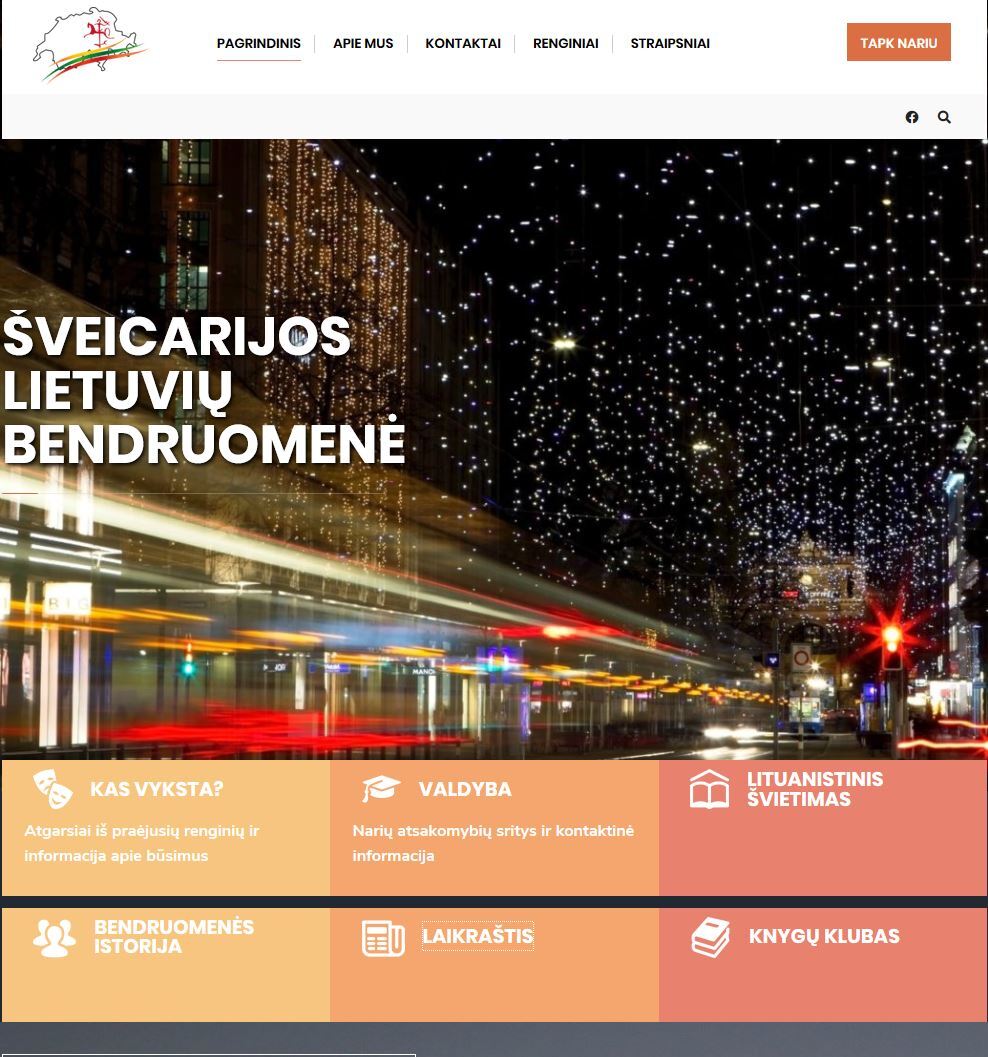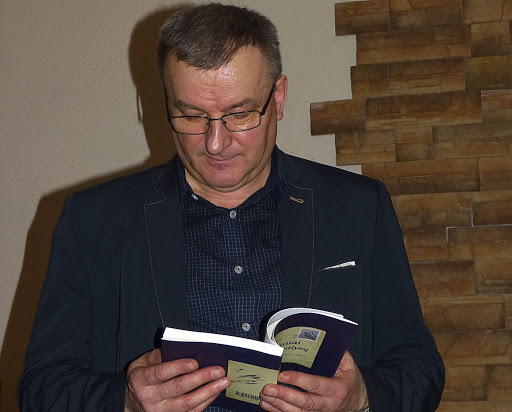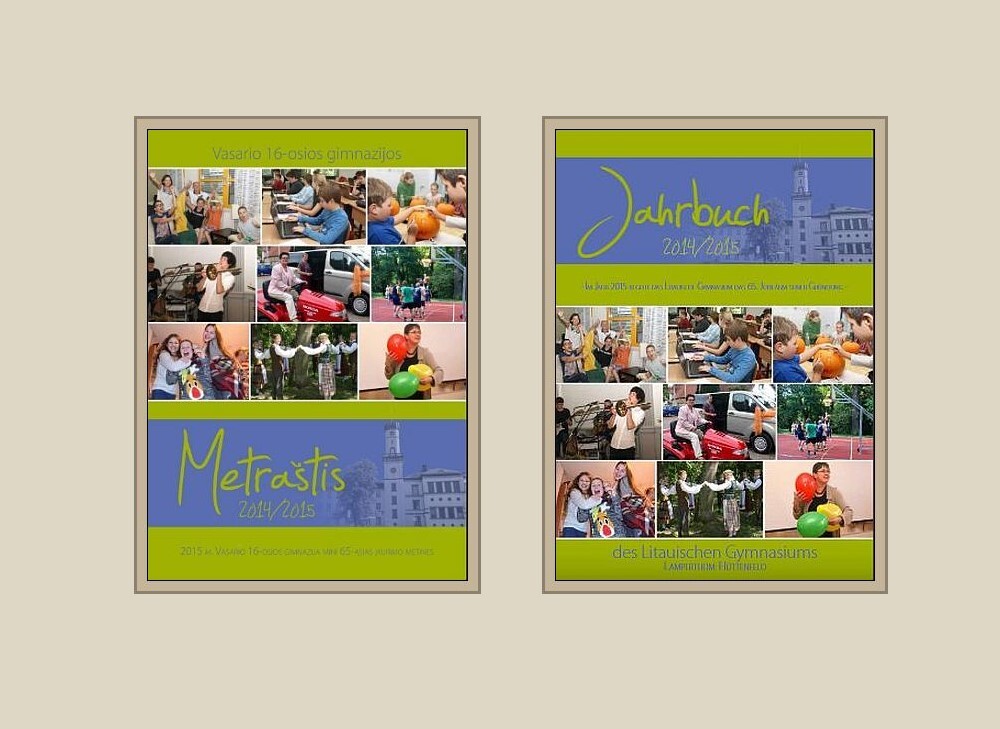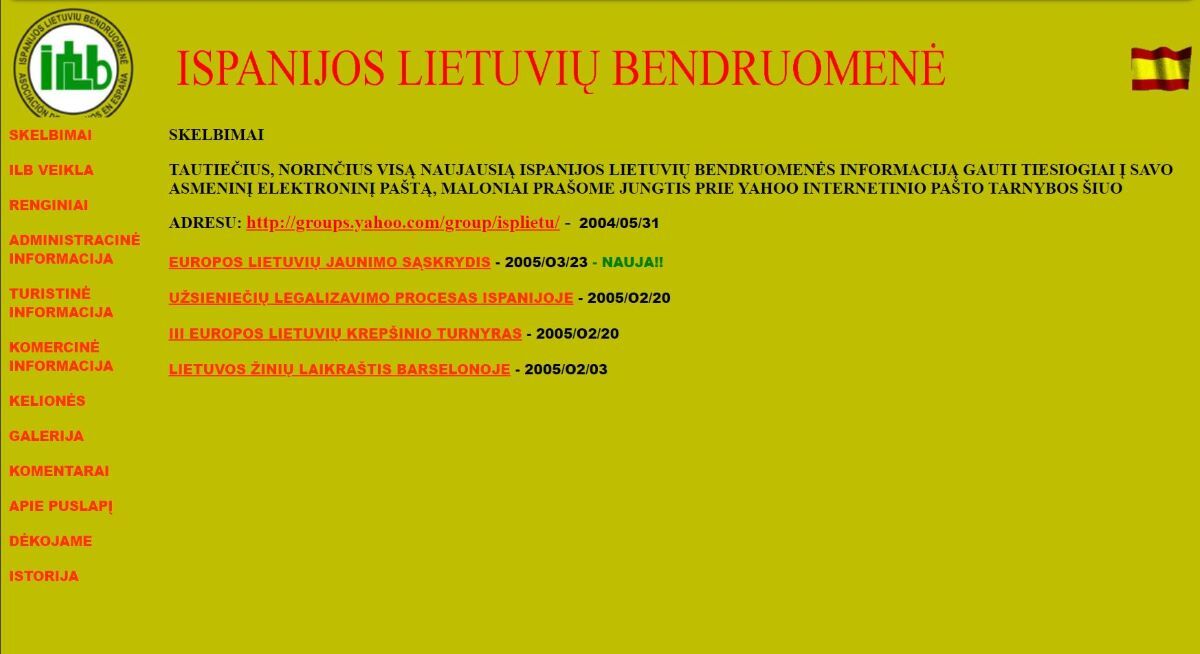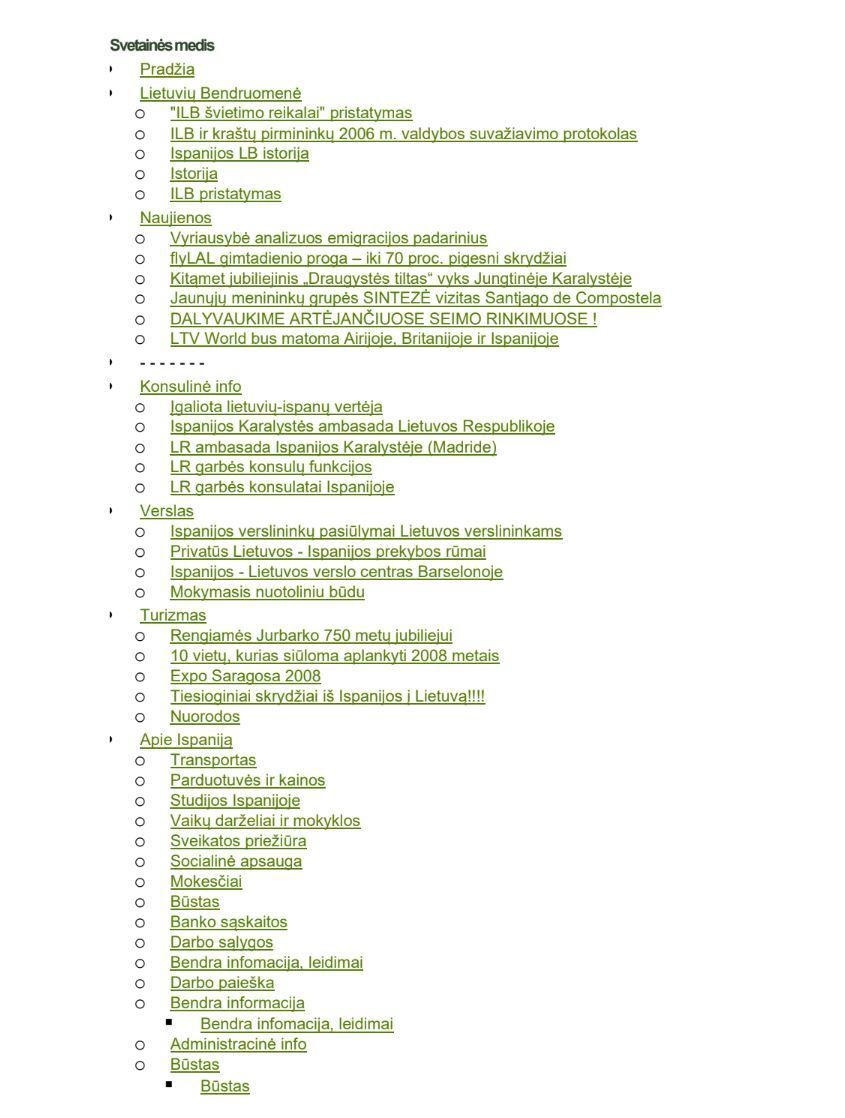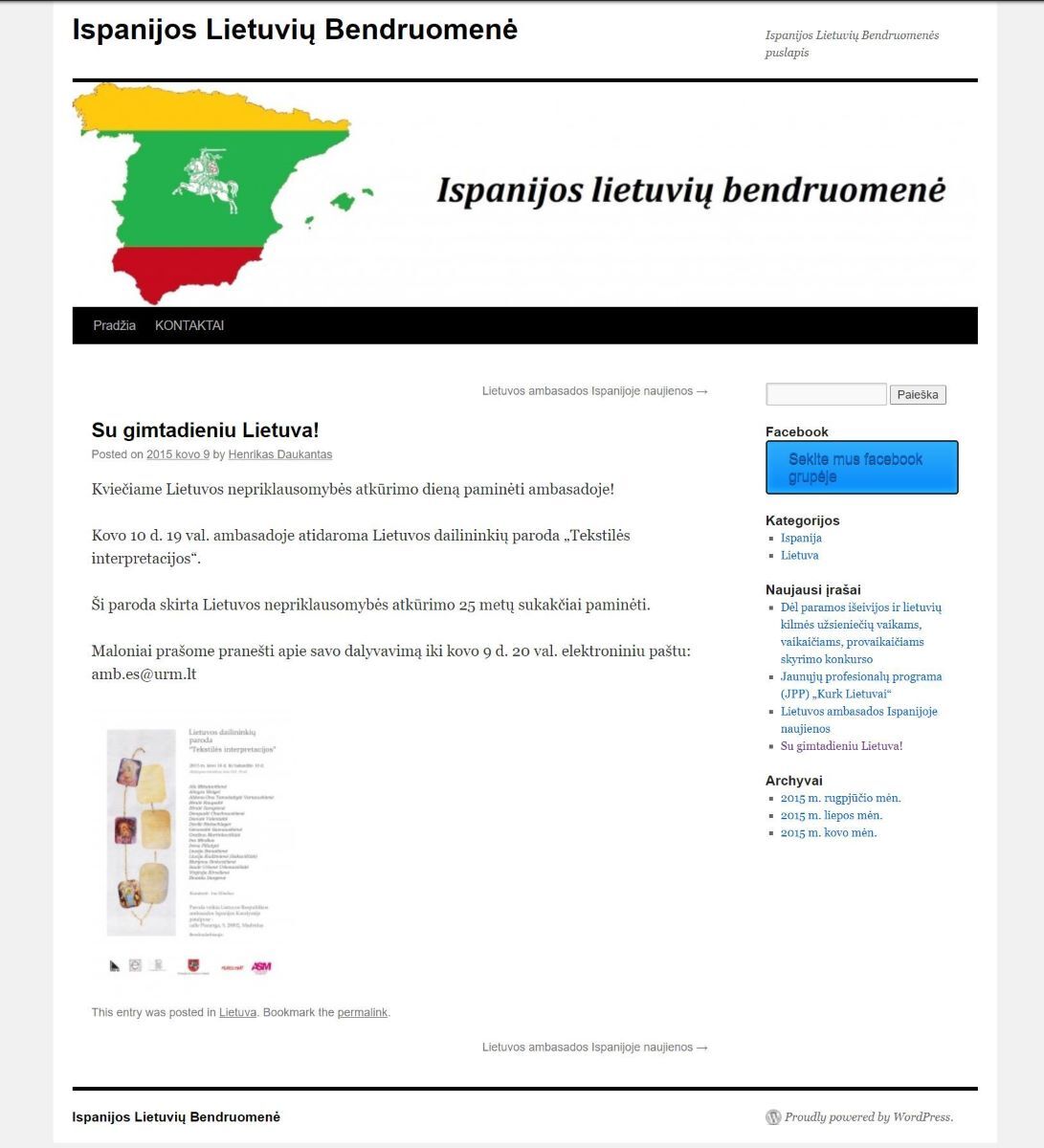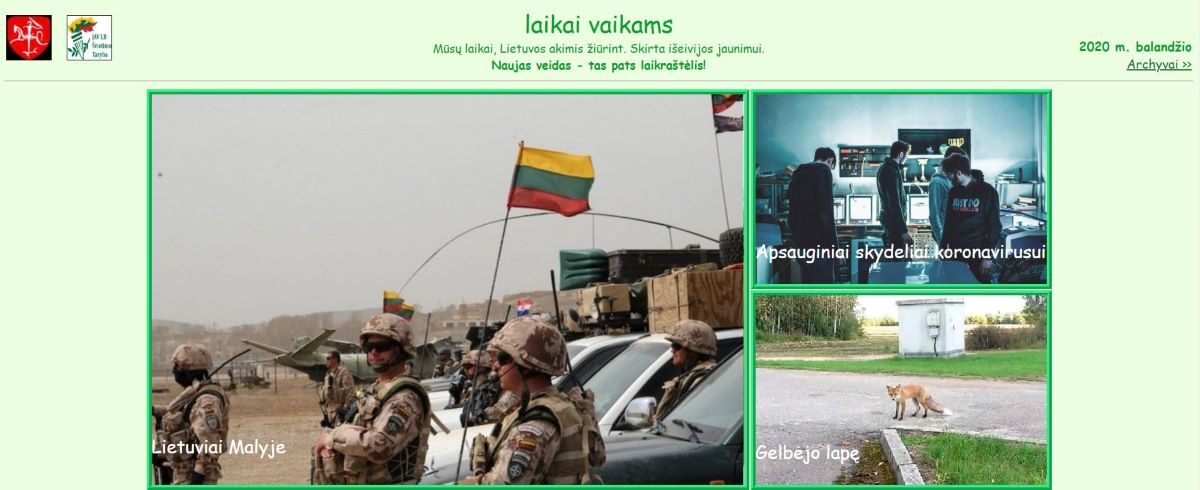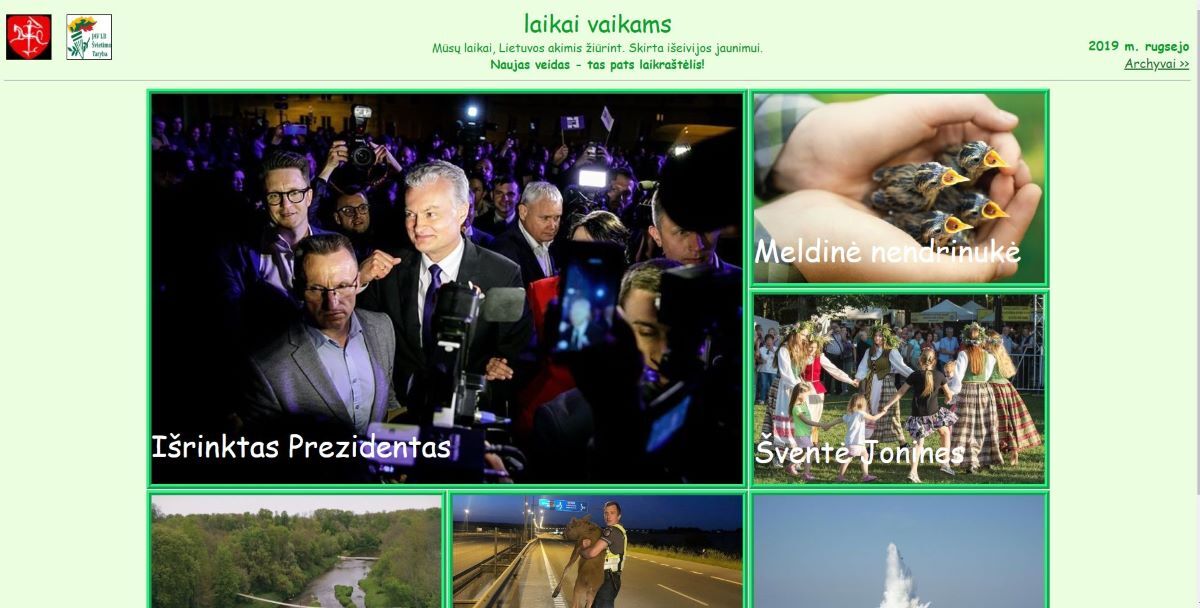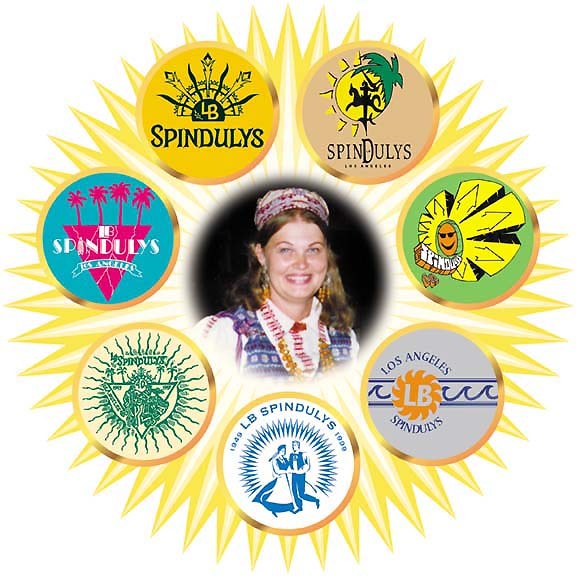-
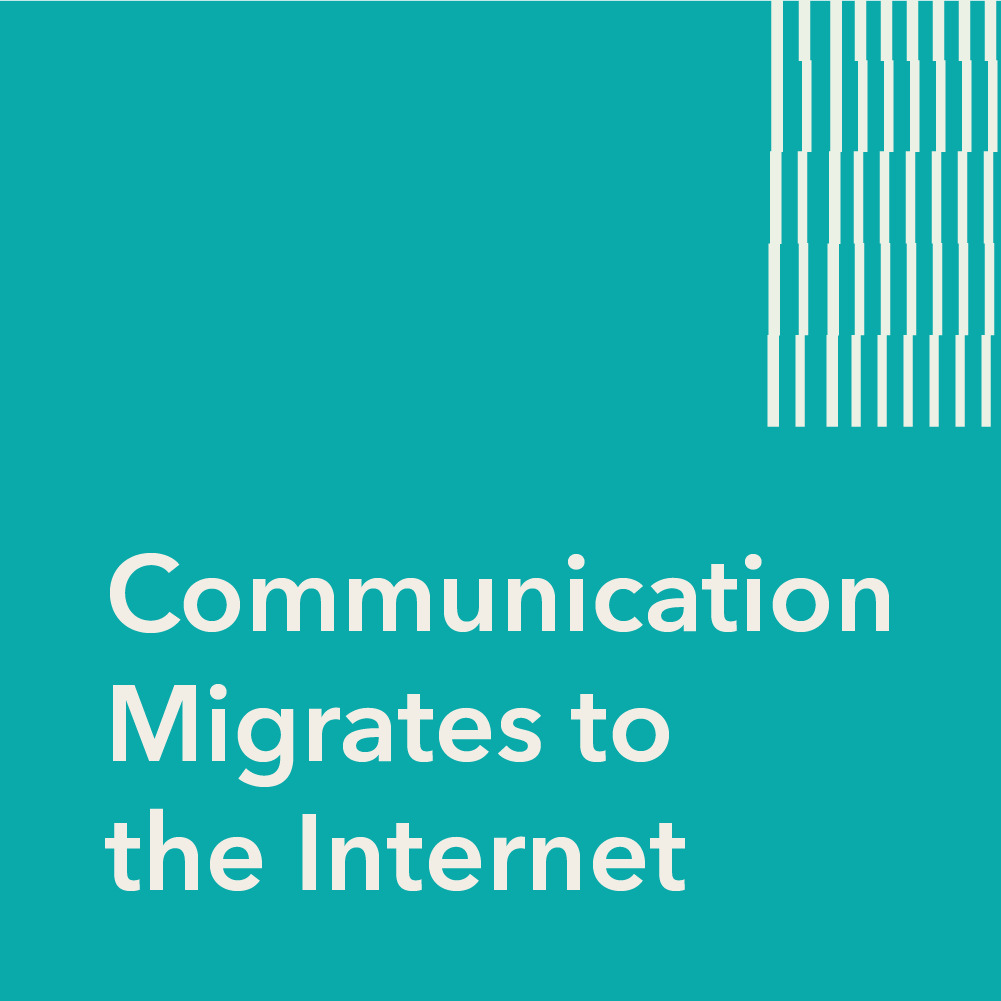
Over the last decades, most information media migrated to the internet and changed format. It gained traction quickly because it was fast, flexible and economical. And so it was natural for the press in the diaspora to transfer to the digital format or to co-exist with it, temporarily or permanently. Various portals and community websites sprang up and became important sources of information.
In this section of the exhibition we present a few examples of Lithuanian diaspora community websites (both traditional and other) and independent information portals, where reliable information about their creators or administrators was available. Due to communication barriers it was not possible to review some very interesting websites such as the Brazilian Lithuanian portal offered in Portuguese.
Many websites appeared between 2005 and 2010. This initiative was also supported by grants from the Lithuanian government’s Department of Minorities and the Diaspora. Among the very first was the Swedish Lithuanian Community website created in 2000. In some cases the technology prompted community activity, as in Luxembourg, where one individual’s effort creating the website lietuva.lu became the catalyst for the official founding of the Luxembourg Lithuanian Community.
Nevertheless, technological progress has its consequences: online news media is now being replaced with social media: blogs, social networks, discussion forums – allowing readers to not only read but to participate in developing the information, sharing it and engaging with others. All of which creates competition for static information portals. This is especially true of Lithuanian communities abroad where websites are the volunteer pastime of one individual or a few enthusiasts. This may be the reason many websites are managed passively or no longer exist at all, and most communication happens on social networks. Yet there are positive examples: the Estonian Lithuanian Community is celebrating its 40th anniversary this year, but their website was created only three years ago, and is an essential source of succinct information for Estonian Lithuanians. There are several active websites in Spain, USA, and elsewhere. The most dynamic are those that include multiple functions, for example the appealing website of Germany’s February 16th High School, shown in this exhibition. -
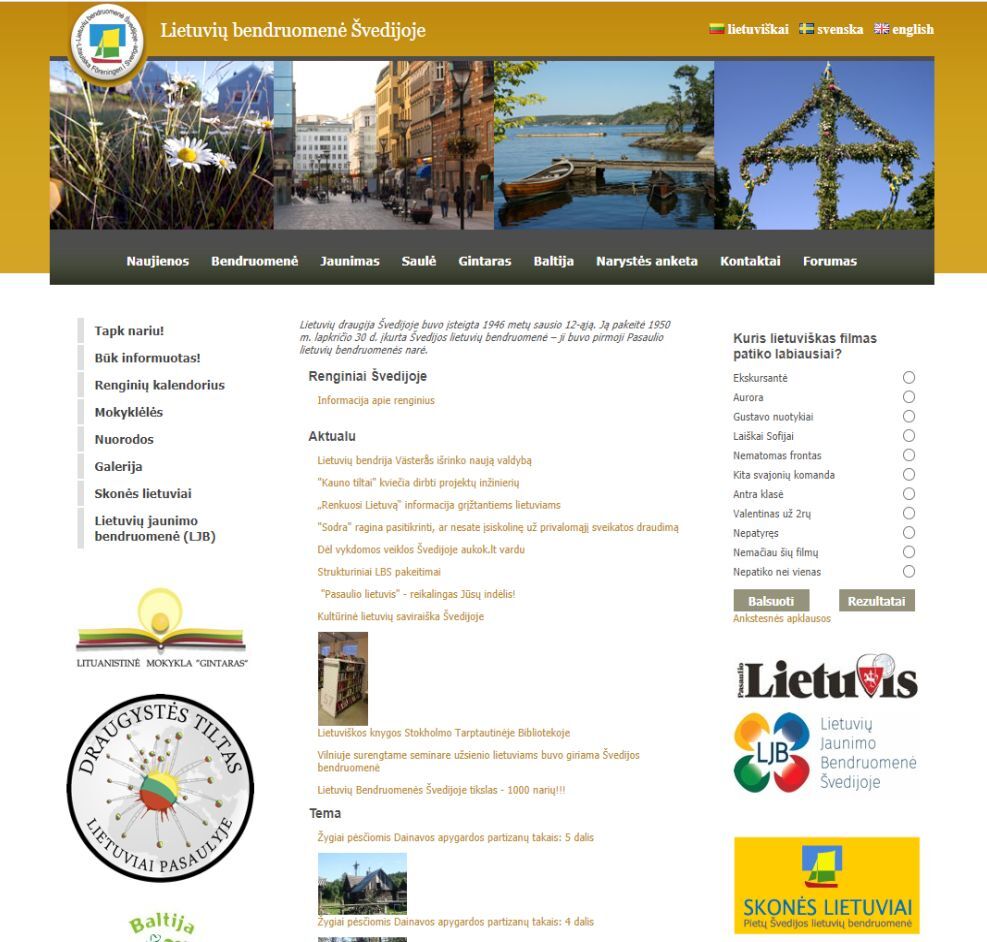
The Swedish Lithuanian Community website, 2020
Swedish Lithuanian Community Website
www.lietuviai.se
1996 was the year of a major change for the Lithuanian Community in Sweden[1]. Prompted by the growing need for communication, Jörgen Städje, a Swede, was asked to initiate an email conference, called “Lit-list” (Lithuanian List), which still exists today with 400 members and is managed by Audronė Vodzinskaitė-Städje. Through “Lit-list”, members circulate information about the Lithuanian community in Sweden, Lithuanian Embassy events, personal inquiries for work, accommodation and other matters.
Even wider possibilities for information-sharing came in 2000 with creation of the Swedish Lithuanian Community website. The website’s creator Audronė Vodzinskaitė-Städje explained that information was posted in Lithuanian, Swedish and English about the by-laws of the Community, the Board of Directors, various groups such as the Women’s Club, the Little School, the folk dance ensemble and Information Centre, as well as Embassy events, Lithuanian history and geography, and Swedish translations of Lithuanian literature. Content was provided by the Community board and members. Links were given for the “Saulė” (Sun) Lithuanian language school and the “Baltija” (Baltic) folk dance ensemble (since 2004). Website costs were donated to the Community by J. Städje. The first Swedish Lithuanian Community website and the “Saullė” school website survived until about 2008.
With increasing membership rose a movement to renew the website. A new one was launched in February 2007, and it still exists today. Its creators were Darius Jakonis and Eleonora Jonušienė, and it was financed by the Minority and Diaspora Department of the Lithuanian government. The website became more open, with a discussion forum and photo gallery. The Community page is highly informative, providing statistics about Swedish Lithuanians, their age, gender, education, etc.
In 2009 there were 100,000 visitors to the website, most of whom were interested in the discussion forum. Only half of the visitors were from Sweden, others were in Lithuania, USA and other countries[2]. Its webmasters constantly seek to improve the website using surveys and soliciting suggestions for its development. It is currently being updated again.
Read more communication in the Swedish Lithuanian Community from 1995-2011 here.
[1]We thank Audronė Vodzinskaitė-Städje and Darius Jakonis for their input and kind cooperation.[2] Read more about the activities of the website in 2007–2010 here.
-
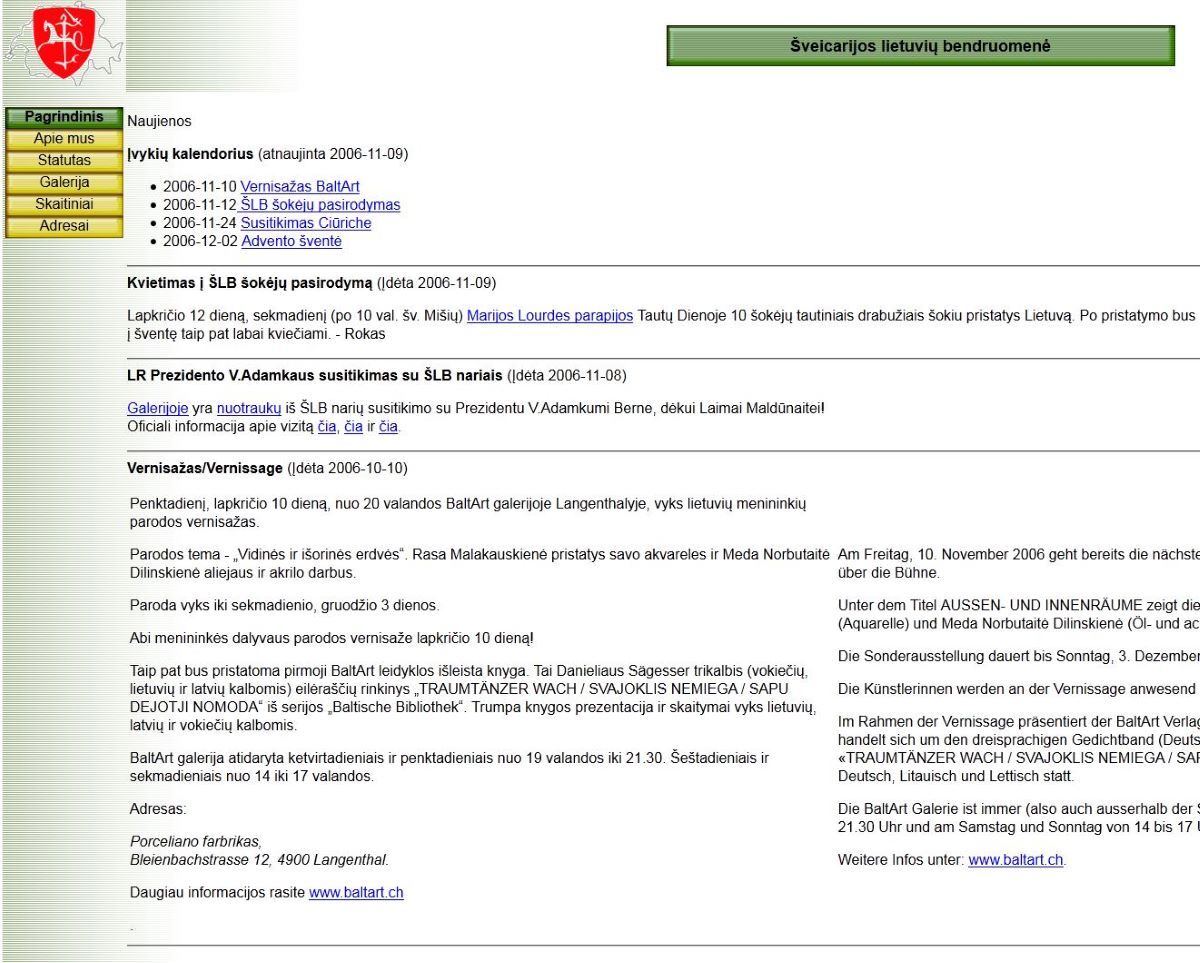
The latest Swiss Lithuanian website, 2020
Swiss Lithuanian Community Website
http://lietuviai.ch
Early in the 2000’s, Vilius Zabulionis created a mailing list of Lithuanians living in Switzerland, and it became an important means of communication. Over the years this became a fairly extensive archive with information on various community events and interests from basketball to Eurovision competitions. In 2006 the Eurovision discussion became so heated that some members of the list asked to unsubscribe because so much email about the contest flooded their mailboxes every morning.
The “godmother” of the website lietuviai.ch is Diana Brunner, who registered the community website in January, 2003. It was launched on February 16 of that year. In 2008 Zabulionis installed a more modern content management system, and Ilona Katkienė became editor. “The website contains information of interest to local Lithuanians, interviews with event organizers who run out of time and energy to promote their work themselves. The website made it easier to bring the community together, and surveys helped understand the needs of Swiss Lithuanians”, said 12-year volunteer editor Katkienė. “Electronic registration for community events became so popular that hardly any members register by telephone any more”.
In 2010 the board of the Swiss Lithuanian Community decided to digitize all the issues of the newspaper Swiss Lithuanian News. All of them, from the first issue in 1951, which was typed on a typewriter, to the last, in 2018, are available online or in PDF format on request. In 2018, the board joined Facebook, and then updated the website again in 2020, encouraging Lithuanians in Switzerland to unite and celebrate being Lithuanian together.[1][1]We thank website editor Ilona Katkienė for providing this information.
-
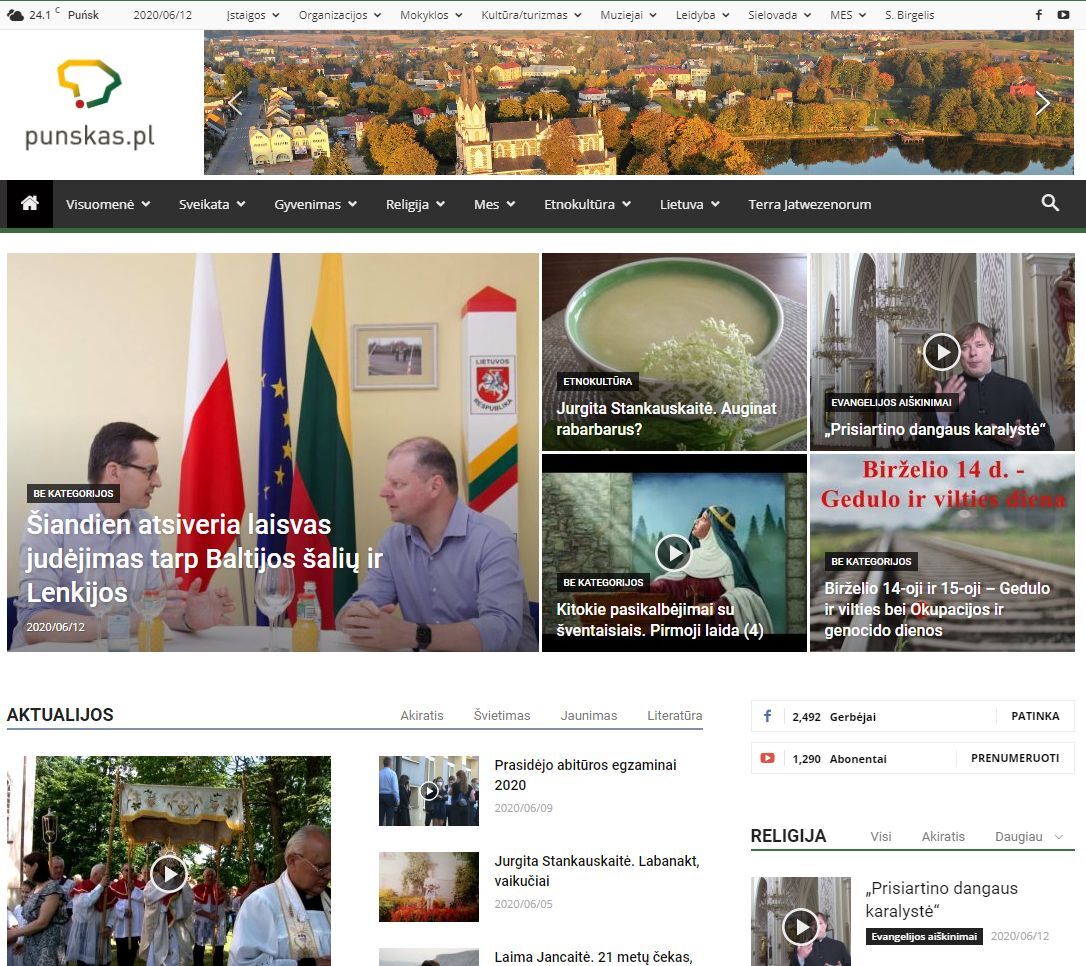
The Polish Lithuanian portal, 2020
Polish Lithuanian portal
https://punskas.pl/
The Polish Lithuanian portal was created 23 years ago and is still managed by the director of the “Aušra” (Dawn) publishing house, Sigitas Birgelis. “First of all the idea came to me that the portal should contain all available information about our institutions, schools and cultural centres. About a year later, I thought to add a news item to the main page every day, and then from 2007 on, articles were posted regularly. There were not many visitors at first, but year by year their numbers increased”, said Birgelis. In his view, this portal is now one of the most important sources of information about Lithuanians in Poland and those living in the ethnic territories, and it helps them understand their environment, participate in social activities, express their opinions and solve community issues. “It is important for them to know not only what’s happening in their region, but in Lithuania and other countries as well”, he said. “They need to identify with the Lithuanian nation.”
The portal is rich in information about Lithuanian cultural and academic accomplishments, well-known personalities, important anniversaries, projects and movements. The preservation and promotion of ethnocultural heritage is an important feature, with recordings of ancient Lithuanians songs and stories. Many stories are posted in the “Dzūkija” dialect, and attract many readers as well as comments in that dialect, which helps preserve it. The articles, video and audio material is also posted on other social networks – Facebook and YouTube.
According to Birgelis, the information on the portal reaches Lithuanians in various European and other countries they emigrated to from Punskas, Seinai and the Suvalkų region, and helps them keep in touch with their country of birth, and they respond to articles eagerly with comments and “likes”. There are also Polish visitors to the website, so the editor provides information about Lithuania and the Lithuanian ethnic minority in Poland, its unique culture and the needs of local Lithuanians.
By June 15, 2020 the portal had attracted a total of 4,914,043 visitors.
More about the Polish Lithuanian portal and its editor is available here. -
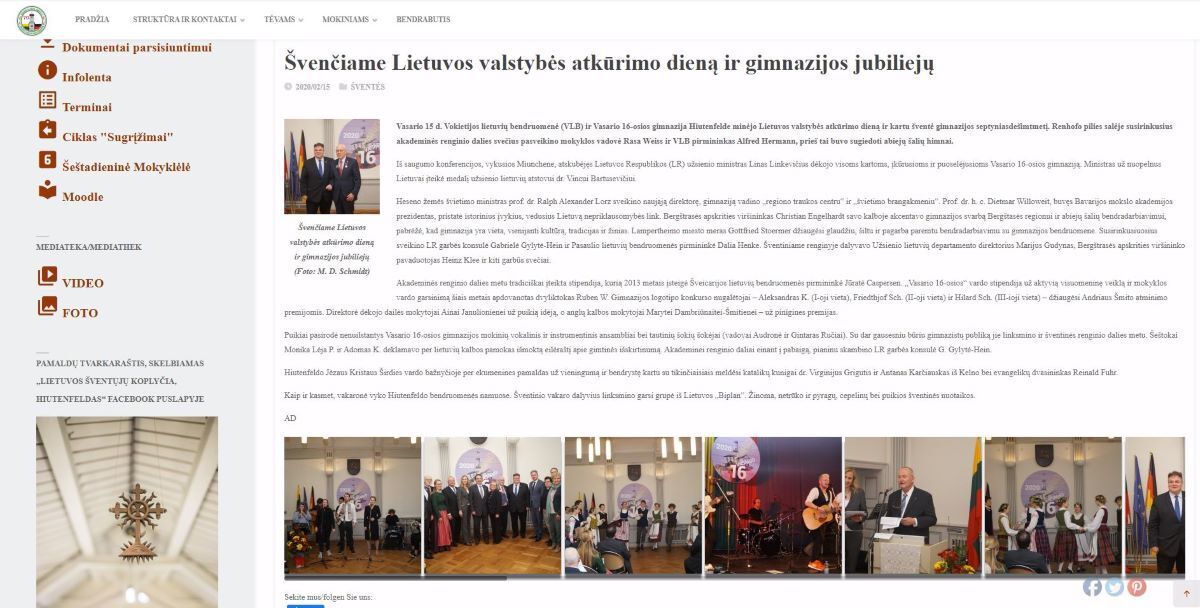
February 16th High School Website
February 16th High School Website
www.gimnazija.de
Until the internet appeared, the February 16th High School in Germany communicated about its activities in several ways. In 1954 it published its first yearbook, and it was printed annually starting in 1982. From 1980 to 2004, information about the school was sent to the magazine World Lithuanian by educator Marytė Dambriūnaitė-Šmitienė. News about school events also reached Lithuanian newspapers in North America, England, Germany, Italy, and sometimes Australia and South America.
In about 2006 school director Andrius Šmitas created the website gimnazija.de. Current faculty members say its difficult beginnings were due to a lack of volunteers. Šmitas devoted a great deal of effort to it, with assistant-director Irena Sattler (Grevienė), teachers Ronaldas Tesnau, Bronė Lipšienė, and Emilija Meikienė. The situation improved in 2010 when the director at the time, Dr. Bronė Narkevičienė, designated funds to pay for the work. Teaching staff member Birutė Augustanavičiūtė wrote articles, and Asta D’Elia translated them into German. The webmaster was Rimas Čuplinskas, president of the high school’s board of curators.
IT specialist Robertas Lendraitis began working at the school in 2016, and rebuilt the entire website in WordPress, adding multiple functions and design solutions. Since 2017, teachers A. D’Elia and Dr. Gabriele Hoffmann provide articles, and since 2019 all articles are translated from Lithuanian to German (and the reverse) by teacher Ignė Vrubliauskaitė. M. Dambriūnaitė-Šmitienė takes photos of special events at the school.
In 2019 the school’s domain was supplemented with several new sub-domains, making room for new and relevant content. In 2020 a remote learning system was installed. There is a link to the boarding students’ page, managed by the students themselves since 2008. According to staff, the yearbook will continue to be published, and each month several articles about school activities appear in the German Lithuanian Community magazine Information. Articles are also sent to the electronic publication Education News[1].
[1]We thank assistant director Irena Sattle, teachers Marytė Dambriūnaitė-Šmitienė, Asta D’Elia and IT specialist Robertas Lendraitis for compiling this information. -
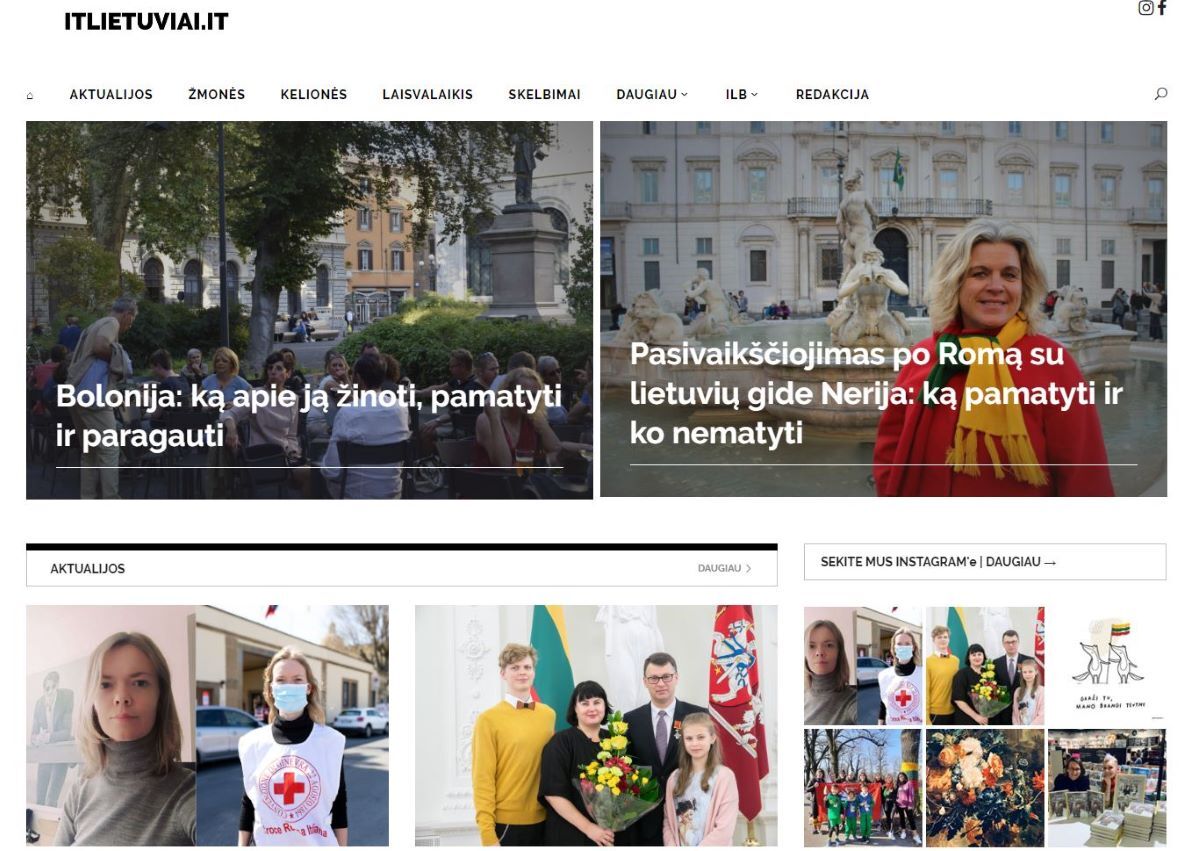
The home page of the Italian Lithuanian news portal, 2020
Italian Lithuanian News Portal
www.itlietuviai.it
The independent and only Italian Lithuanian news portal itlietuviai.it is a professionally presented site with information in Lithuanian and Italian for Lithuanians in Italy and abroad, and Italians interested in Lithuania.
It was launched in Rome on November 29, 2014, as the website of the Italian Lithuanian Community, when the portal itlietuviai.it disconnected itself from the Italian Lithuanian Community, and with the agreement of both parties became an independent Italian Lithuanian news portal. For the first five years the portal was developed by its creators, journalist Agnė Buckutė and website developer Sima Šilingytė.A new team took over on June 7, 2020, consisting of journalists Daiva Lapėnaitė and Neringa Budrytė, IT specialist Aurelija Orlova and social studies expert and activist Elzė Di Meglio.
The portal works closely with the Italian Lithuanian Community and its chapters in various regions, the Lithuanian Embassy in Italy, Lithuanian honorary consuls in Italy, Lithuanian and Italian media. In cooperation with Lithuanian journalists, writers and bloggers from various areas of Italy, students of journalism, photography, marketing, information technology and Italian language are invited to apply for internships with itlietuviai.it.
The portal itlietuviai.it functions as a non-governmental organization espousing political neutrality. -
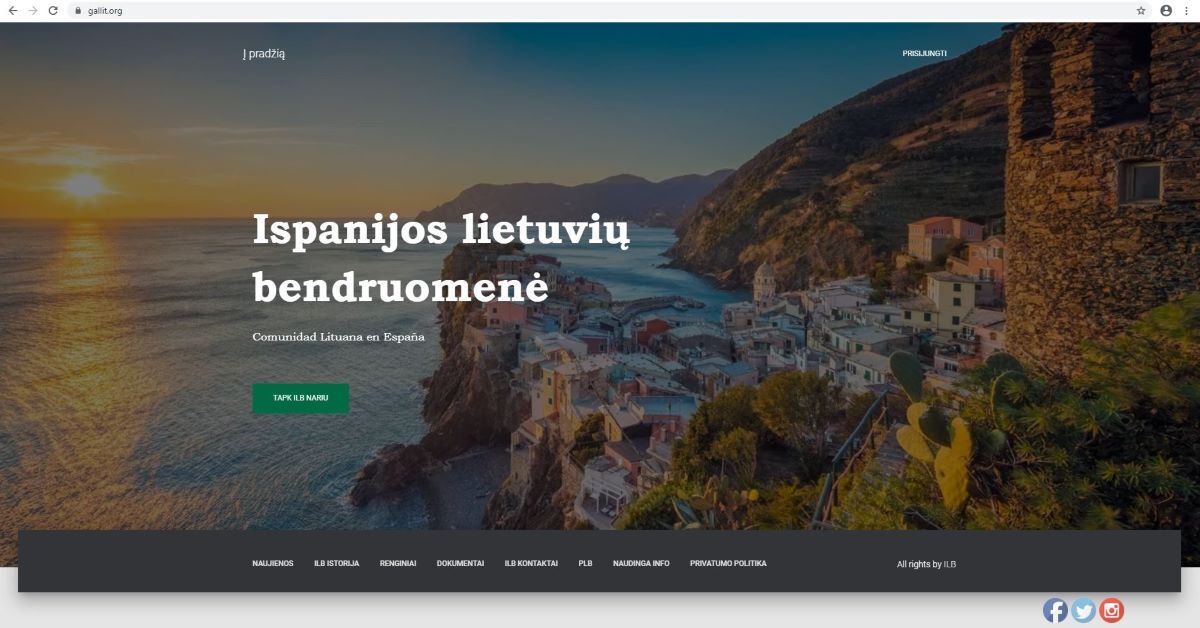
Home page of the newest website of the Spanish Lithuanian Community, 2020
Spanish Lithuanian Community Website
https://gallit.org
The first Spanish Lithuanian website lituanos.com was registered by the Community board in February, 2004. Eglė Barskaja was the webmaster and wrote about events and activities in the Spanish Lithuanian community. The website disappeared at the end of 2006, and the domain was lost as well, and was not retrieved due to the unreasonably high cost.
In February, 2008, the community began the website lituanos.net, and Ieva Čekuolytė, board president at the time, created it with board member Tomas Kriukelis. The site contained news about the community, consular news, useful links, photos, ads and a discussion forum. Much of the content was dedicated to culture and historical information about the community and its activities before 2008. The website was carefully designed, and information was posted in Lithuanian and in Spanish, with constant updating of tourist information. However after mid-2012, it was taken over by other users who had no ties to the Lithuanian community or to Spain.
The third Spanish Lithuanian community website lituanos.es was registered in 2013 by the Community board at the time, in hopes of providing contact information for the community and directing visitors to the Facebook group “Spanish Lithuanian Community/Comunidad Lituana en España”. This group, formed on April 20, 2012, became the main contact and information platform, and after a year the website itself became irrelevant.
The fourth attempt to revive the Spanish Lithuanian community website began in March, 2015, when Henrikas Daukantas, member of the Spanish Lithuanian Youth Association registered a new domain and created the website ispanijoslietuviai.com. This non-professional project was several years in the making and was personally funded and managed by Henrikas.
In 2019, the need for a publicly available electronic platform arose once again as the community reached its 15th anniversary. In order to produce a yearbook of community activities and photos the board decided to use the Galicia region’s website gallit.org. Gradually other community information migrated to that website as well.
On February 20, 2020 the Spanish Lithuanian community was able to retrieve the domain lituanos.es and register it for the community. Today lituanos.es is the main website for the Spanish Lithuanian community. The domain and website hosting is privately funded, and the webmaster is a volunteer professional IT specialist. -
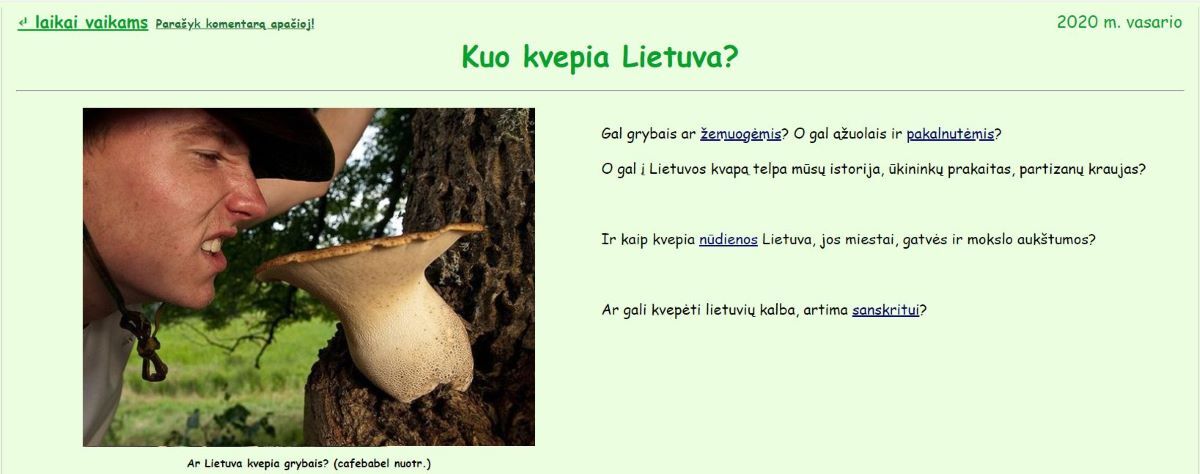
Home page of the internet newspaper Times for Children, February, 2020
Internet Newspaper for Youth Times for Children
www.laikaivaikams.org
The editors of the internet publication Times for Children launched it in April, 2008, with the introduction “Our times, from Lithuania’s viewpoint. For youth in the diaspora”.
The initiator of the project was Dr. Mirga Girniuvienė, who explained that the Lithuanian American Community’s Education Council received an invitation that year to propose a project that would be funded by Lithuania. Of two applications, one was for Times for Children. “The idea of an internet newspaper came to me because I remembered the lessons about Lithuania we gave in the upper classes at the Boston Lithuanian Language School where I taught”, said Girniuvienė. “I used to give the students a Lithuanian newspaper to read (e.g., Lietuvos rytas/Lithuanian Morning). It was VERY difficult for them, and sentence structure was incomprehensible to them. Back then I thought it would be helpful to have a newspaper to teach students about Lithuania today. It’s not just a country of folklore, literature and ancient history. Life is flourishing there, and our children are not in tune with it.”
The editor-in-chief ensures that every issue has at least one article about Lithuania – its nature, environment, customs, festivals, accomplishments or civic activities and at least one about the republic of Lithuania. Most readers of Times for Children are students at Lithuanian language schools, and the publication is posted from August to April. It is read by youth from California, Illinois, Massachusetts, New York, Florida, Michigan and other states. Readers may submit comments about articles they like, and the editors receive up to 20 comments each month.
Currently the editors are Dr. Saulius Girnius and M. Girniuvienė. The technical work is done by 14-year-old Simas Juknelis. It is published by the Lithuanian American Community Education Council. -
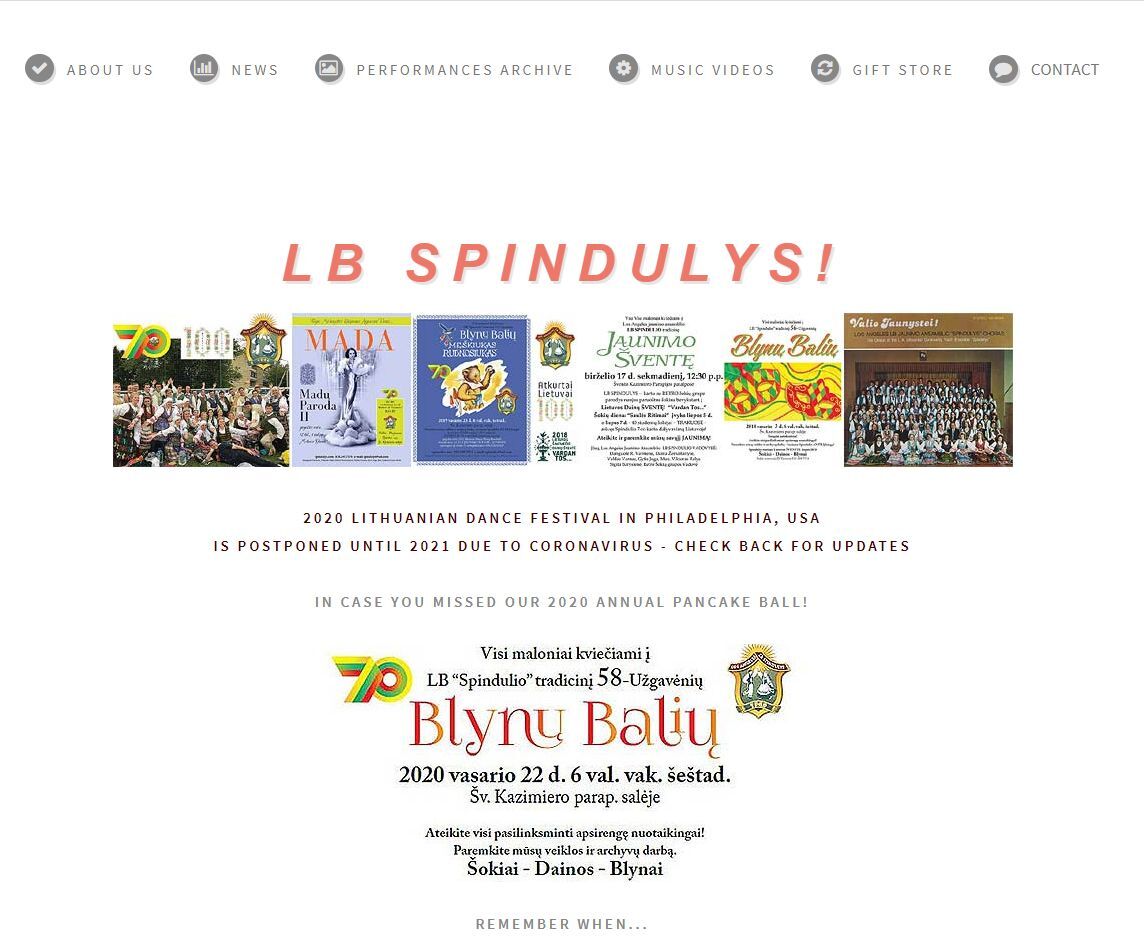
Home page of the Los Angeles Lithuanian Folk Dance Ensemble “LB Spindulys” website, 2020
Los Angeles Lithuanian Folk Dance Ensemble “LB Spindulys“ Website
http://www.spindulys.com
The Lithuanian folk dance ensemble “LB Spindulys” was established in Los Angeles in 1949.
Its website, in English, is unique, funded by one family. According to the current director of “LB Spindulys”, Danguolė Razutytė-Varnienė, “there is no other copy of the history of our ensemble, except for the one on the website”. Its history began after the war, when Lithuanian folk dance, music teacher, and choir director Ona Razutienė (1908-1987) came to USA from Europe. Her children D. Razutytė-Varnienė and Aloyzas (Al) Rasutis continue her work today.
The website was create by Davidas Grieze in about 1999. For the first few months it was not very active, and film director A. Razutis took over its administration. The main purpose of the website is to post news, archive various information about the ensemble, and preserve its history for future generations. Razutytė-Varnienė says the development of the website happened naturally – it grew as information about the ensemble increased. Razutis created a great variety of pages on the website reflecting daily life of the folk dance group as well as video and audio recordings and photos. A large amount of space is dedicated to events and news. The website also features a visual archive by Paulius Jasiukonis, who has documented most Lithuanian events in Los Angeles.
Danguolė Razutytė-Varnienė, who funded the creation and development of the website and provided most of its content, and Al Razutis are the reason that “LB Spindulys” is still flourishing after more than 20 years. Rasa Matulaitytė-Hendrickson is in charge of the graphics on the website. Other than personal investment by D. Razutytė-Varnienė, the website is also supported by the group’s members, who organize fundraising activities such as the annual Los Angeles Lithuanian Pancake Dinner.
Currently the website consists of over 60 pages, and their number is still growing. “Twenty years of work is something visitors to the website seldom see”, says D. Razutytė-Varnienė. The website, created well before social media appeared, is in many ways without precedent in Lithuanian American community life. -
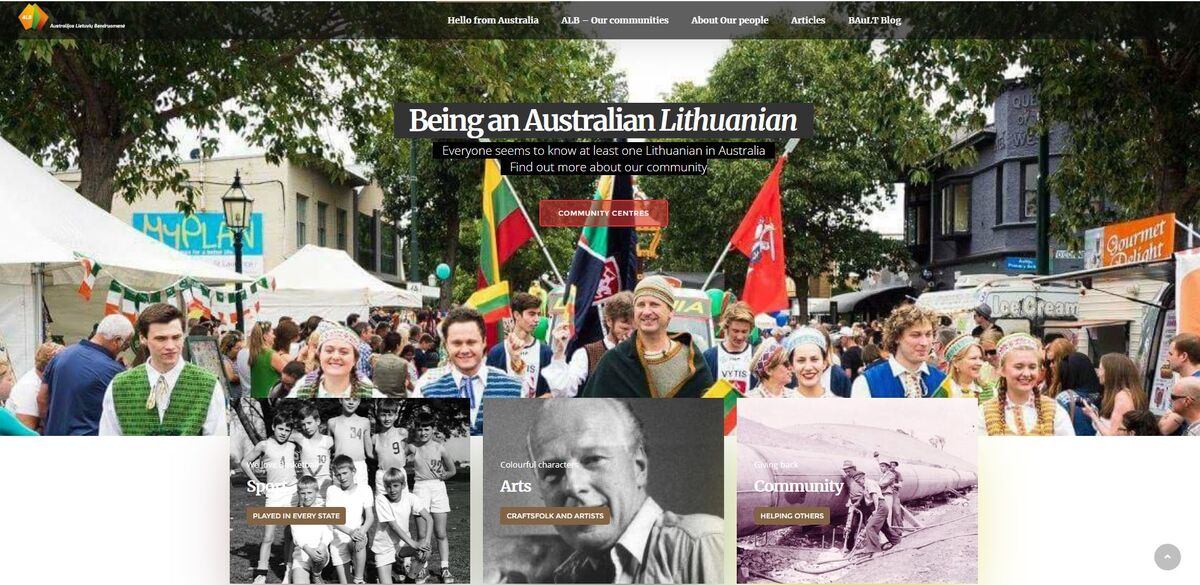
Home page of the Australian Lithuanian Community’s website, 2020
Australian Lithuanian Community Website
www.australianlithuanians.org
The Australian Lithuanian Community website launched in 2018 is in English, has an esthetically appealing design, and is possibly the newest website created in the Lithuanian diaspora. Although there have been several attempts to create an Australian Lithuanian website, due to lack of funds none of them reached a professional standard.
According to designer and administrator Mindaugas Simankevičius, the idea of creating a new website for the community came to Gaila Muceniekaitė when Lithuania celebrated its 100th anniversary of statehood. The purpose of the website is to establish a more visible profile for the Australian Lithuanian community not only in Australia, but in Lithuania and the world. For this reason its initiators envision presenting on it Australian Lithuanian heritage and essential information about smaller Australian Lithuanian communities.
M. Simankevičius hopes that in the future, once funding is established, the website will contain information about community founders, activists, sports enthusiasts, Australian Lithuanian artists, Scout leaders, choirs, Lithuanian folk dance groups and their directors, women’s groups and other Australian Lithuanian organizations. “In other words, this would be the digital chronicle of the history of our community”, said the administrator. It would also feature information about Lithuania, but he would not like it to become another “Wikipedia”. Simankevičius emphasized that “we would like to focus on the history and activity of the diaspora in our country”.

